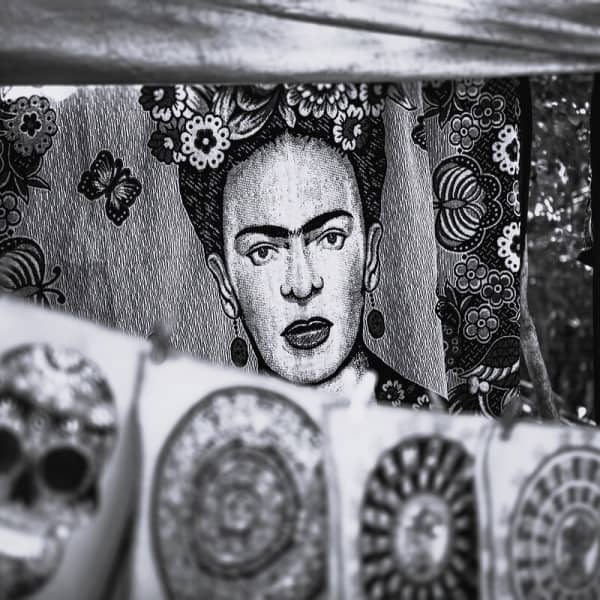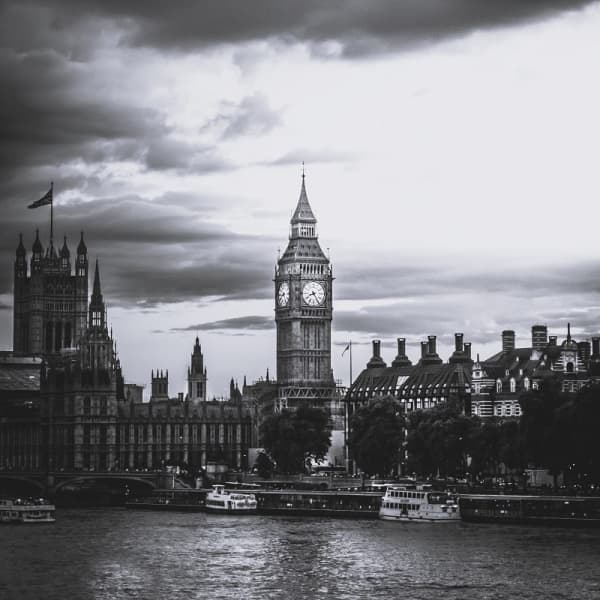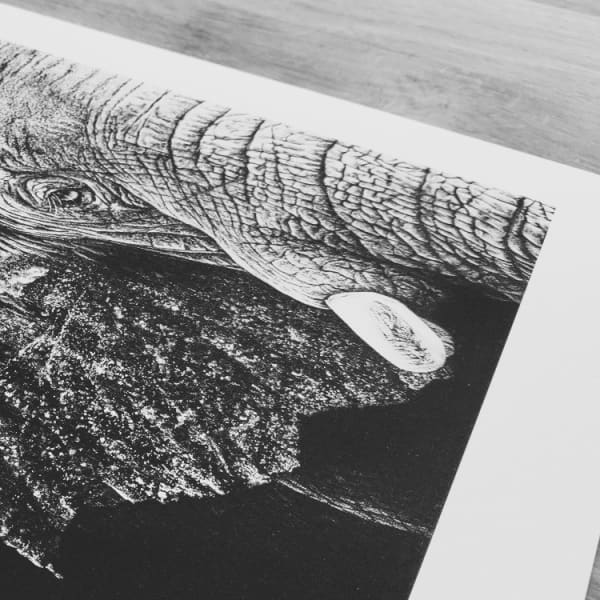Portraits are personal
A portrait painter has a difficult job to do. They have the task of capturing the personality and character of the subject in front of them, but that subject isn’t a bowl of fruit or a landscape, it’s a living, breathing person, with feelings, beauty, and flaws.
That human being will have expectations of how they look on the surface. Those expectations are often a reflection of how they feel on the inside. When they look at the finished piece, will they be anticipating a grand, regal figure, or someone more fragile, with a list of imperfections on show?
As a portrait painter, you have to do your own form of curation. What are the essential characteristics of this person? What can be ignored? How real should this painting be? I also mean ‘real’ here in every sense of the word.
I had the pleasure of painting the portrait of a good friend of mine a few years ago, and while it was a great experience, the process certainly had its challenges. Some obstacles were expected - dealing with the size of the piece, dealing with my colourblindness (as usual..). Other obstacles were not expected - how do I capture the individual’s personality and charm? How do I create something that I know he’ll enjoy seeing everyday?
I learnt a lot about what it takes to be a portrait artist, so I thought I would write a blog post on the experience.
Before picking up a paintbrush
As with any commission, there was a lot of work involved before even opening up the paints. I needed to fully understand what the client was after - where would the painting go? What should the painting say about the owner? How will the subject be posed? There was plenty of discussion until I was confident in moving forward.
I took lots of reference photos, including images of the subject in the agreed pose. Knowing the client well, I felt the pose needed to be relaxed. I have lots of memories chatting to him on the sofa, enjoying a glass of bubbly or gin and tonic. So, that’s exactly what we did; except I would subtly take some photos every now and again. I found that this approach worked really well, as there was no awkwardness or rigidity to the pictures.
I made sure to take photos of every element going into the final piece. We thought it would be a nice touch to include the glass of gin and tonic, so several reference photos were taken of its contents. I also drank a few glasses too…for research purposes.
Sketching out a composition was next. This was relatively easy to come up with thanks to the reference photos. I had a pretty good idea of what the pose would be, so it was merely a matter of deciding some of the extra details, and fitting it to the proportions of the canvas. The canvas size was predetermined by the chosen wall space - the client wanted to place his portrait on his staircase, so it was impossible to miss when visiting. A large sketch can seem daunting, so I broke the whole thing down into a grid of more manageable chunks.
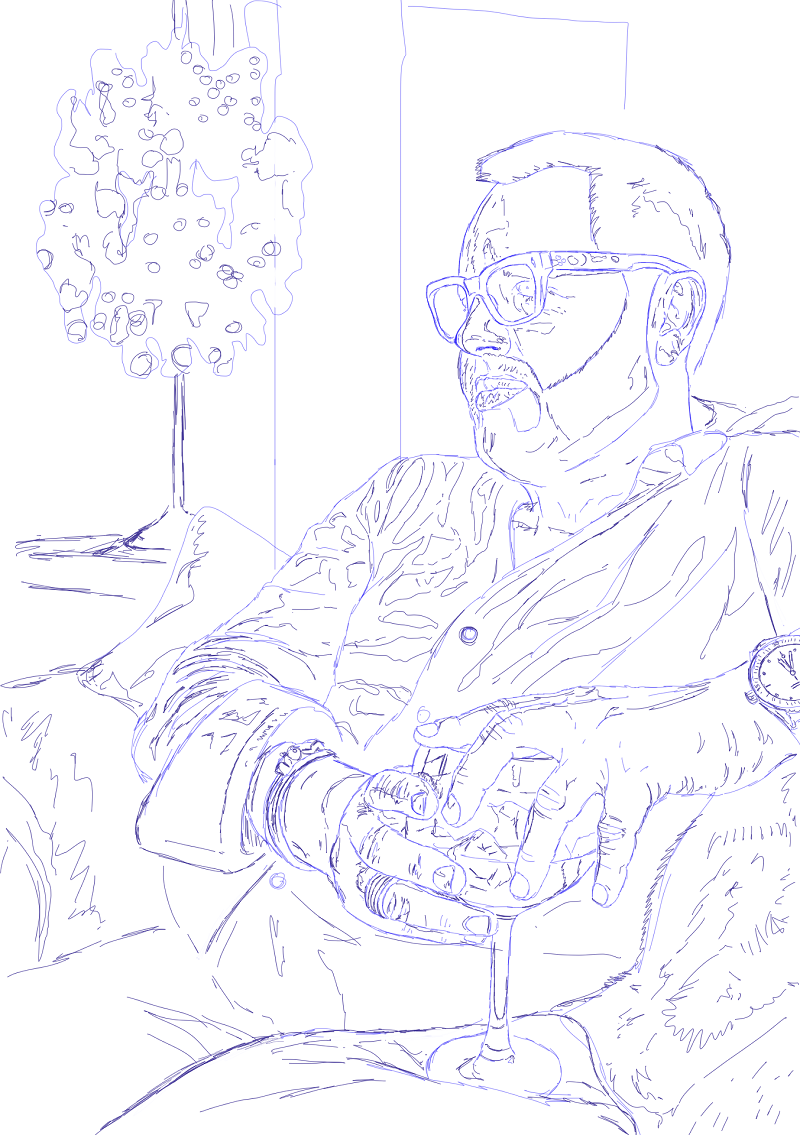
Painting. Where to start?
At this point, I have a huge, virtually blank canvas in front of me, with only a pencil sketch to guide the next steps. There is no right or wrong answer on where to begin, but I usually try to find an area that is quite simple, maybe a block of a single colour, or maybe really dark areas that are practically black.
I started with the subject’s shirt - using mostly dark blue and black for shadows. Lots of creases ripples in the shirt resulted in several shades of blue being used. It was an easy place to start, and was also a large percentage of the canvas, so some good progress could be made.
With my colourblind eyes, I can easily get the initial colours wrong, and I’ve learnt to accept that they often need redoing. It’s a good idea to block out the painting as accurately as possible, so that if and when colours must change, I merely have to go over what I’ve painted already.
An example of this within the giant portrait was the subject’s skin. I initially painted the hands quite grey, which made him look very ill. At this point I needed a well-sighted helper to assist me in mixing the correct colours. It turns out skin pigment requires more unusual colours than you think, so no wonder I had a tough time with it!
Other areas that can be great to start off with are what I call ‘repetitive areas’. These are sections of a painting where there is not much variation, but are often very repetitive and time-consuming to paint. On the portrait, this can be seen in the bottom right hand corner, where a furry cushion is under the subject’s arm. By focusing on a ‘repetitive area’, you don’t have to worry about the bigger picture, and can concentrate on just putting brush to canvas.
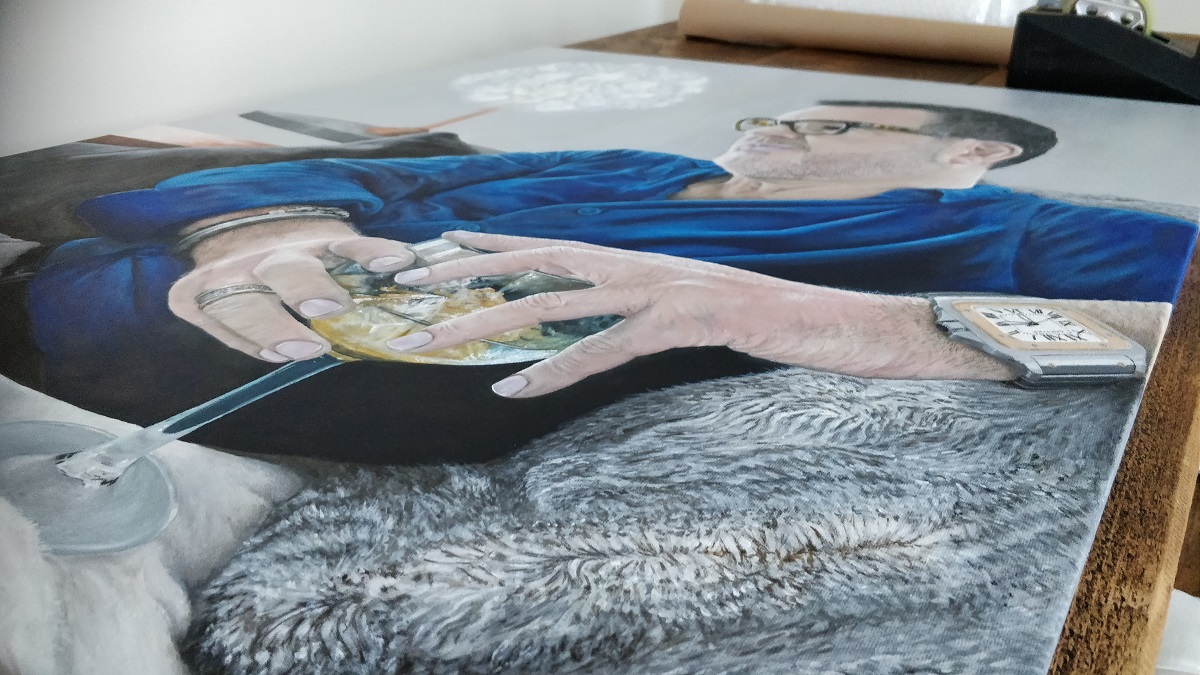
How real is too real?
One thing I had to consider when starting this painting was how realistic I intended it to be. The finished piece needed to be instantly recognisable as the subject, but more detail doesn’t necessarily mean a better image. My style has always been relatively detailed, so I maintained this approach. Clothing and fabrics were kept quite simple however, so they appear smooth and soft.
I wanted to make sure the subject’s jewellery and glasses were accurate, as these are very important to him. The watch even has a detailed face on it. I challenged myself to create a realistic drink in his hand, as the reflections from the ice cubes and glass were fairly complex.
There is also a chandelier lamp in the background that the subject requested be in the portrait somewhere. I didn’t want this to distract viewers from the main point of focus, so I made it quite blurred, as if shimmering from the light it’s emitting.
I think the end result was a success, and certainly a lot of planning and consideration went into the final piece. A portrait is so personal to the owner, that it’s important to have a clear path to the finish line, ensuring that your final depiction is one that the subject is proud of.
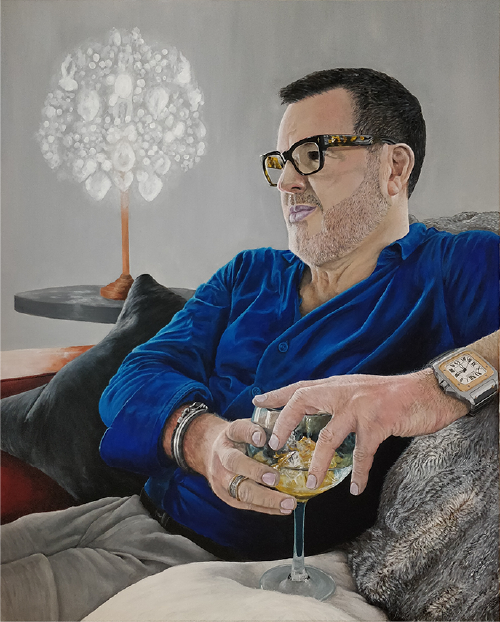
If you’re interested in having your own painting or print, you can order one on my website, or feel free to get in touch with me directly. I strive to offer this best quality possible, at an affordable price.
Yours,
Joseph Cashmore - ART JC
